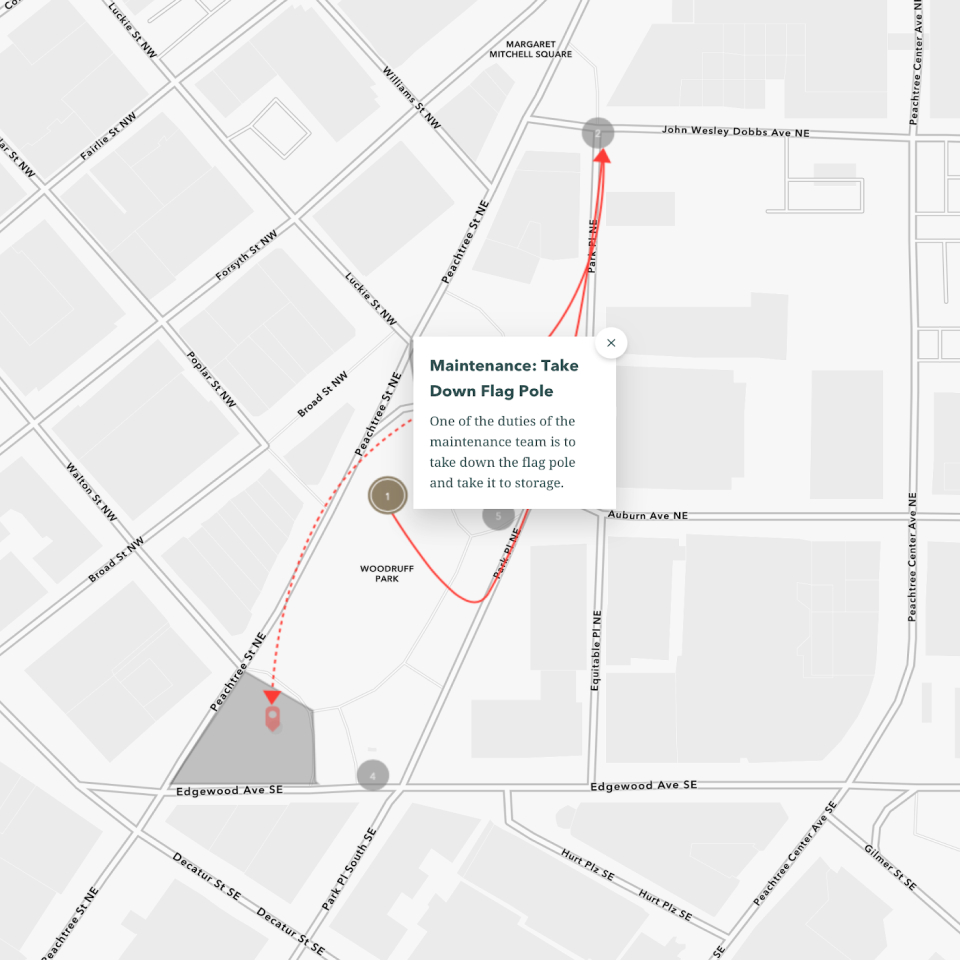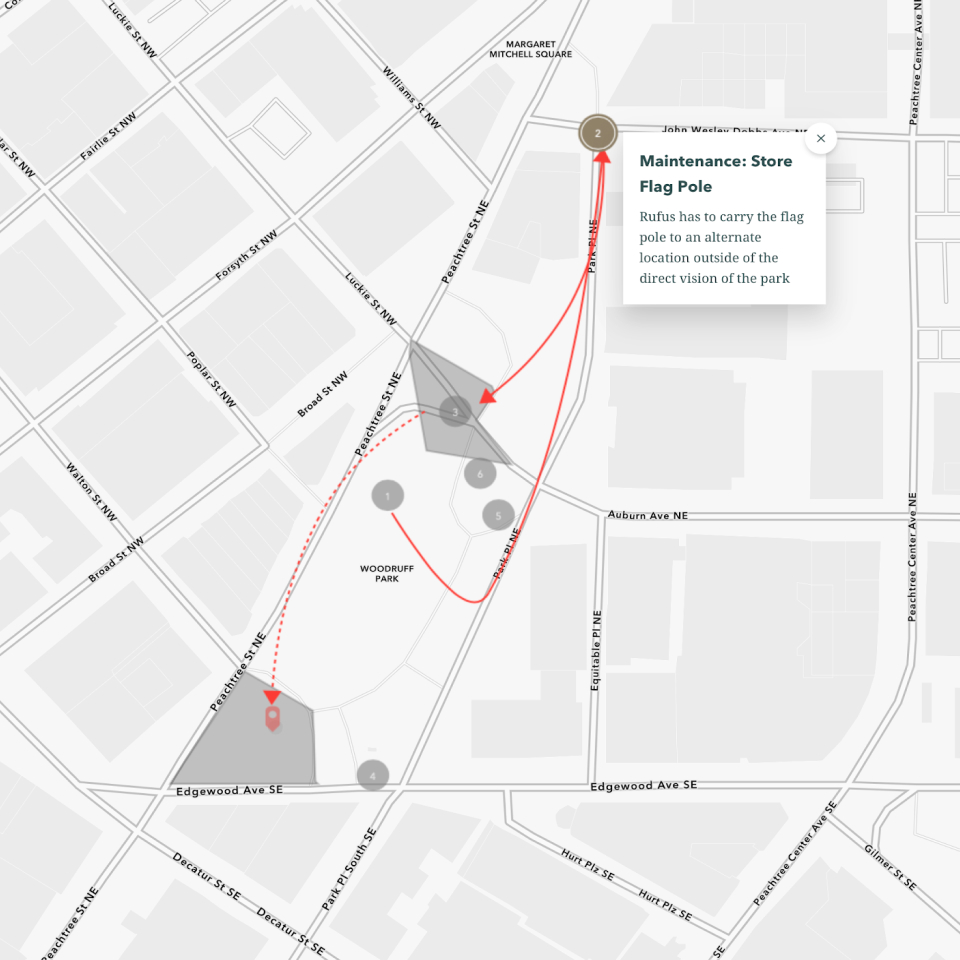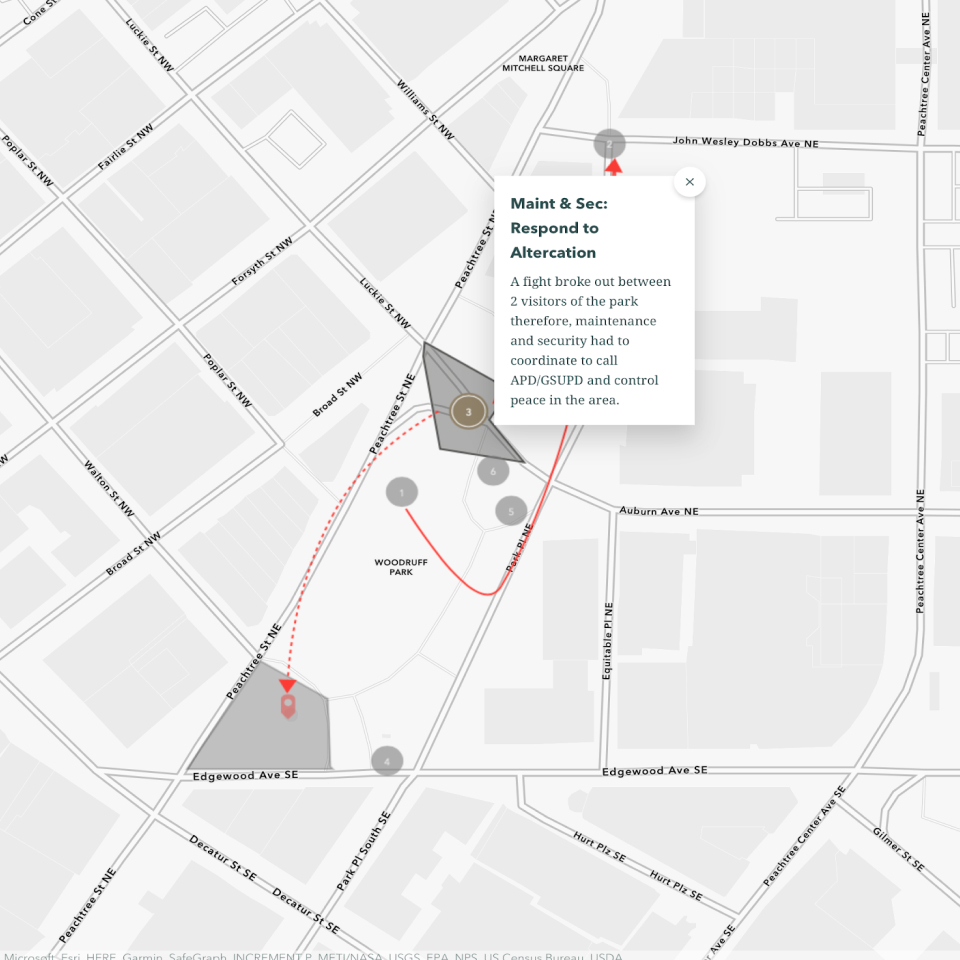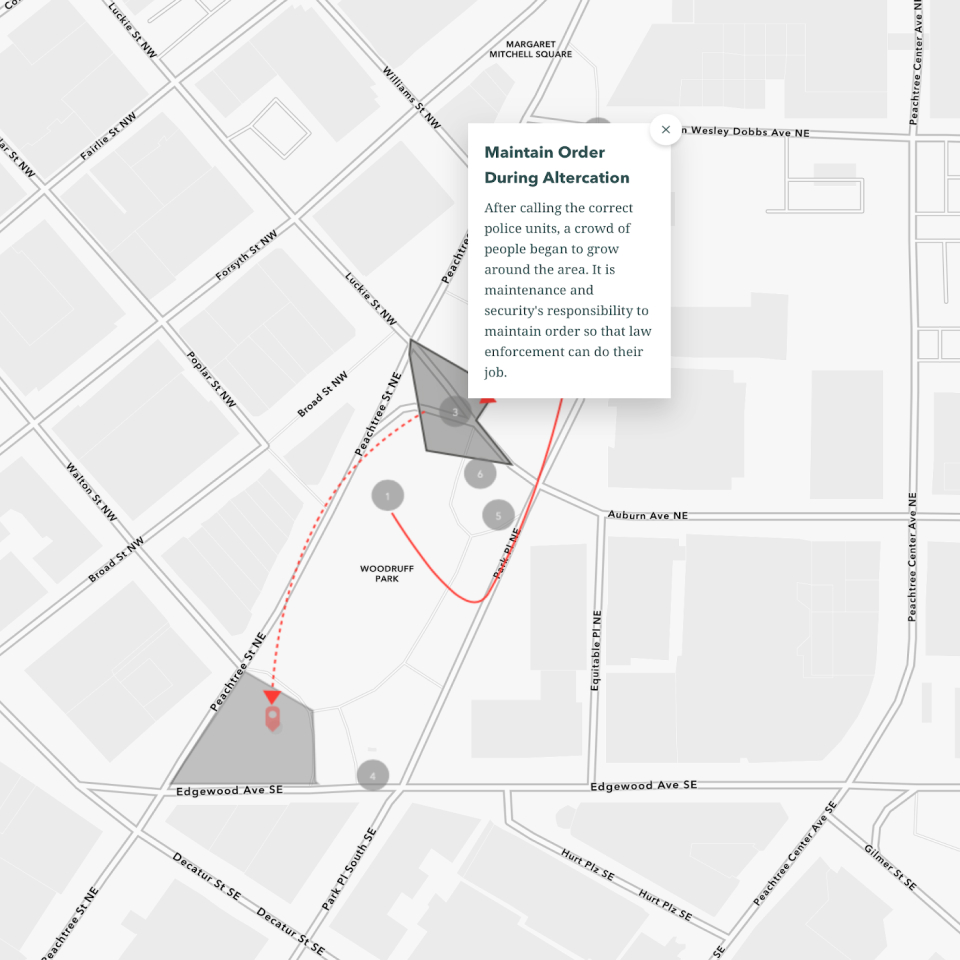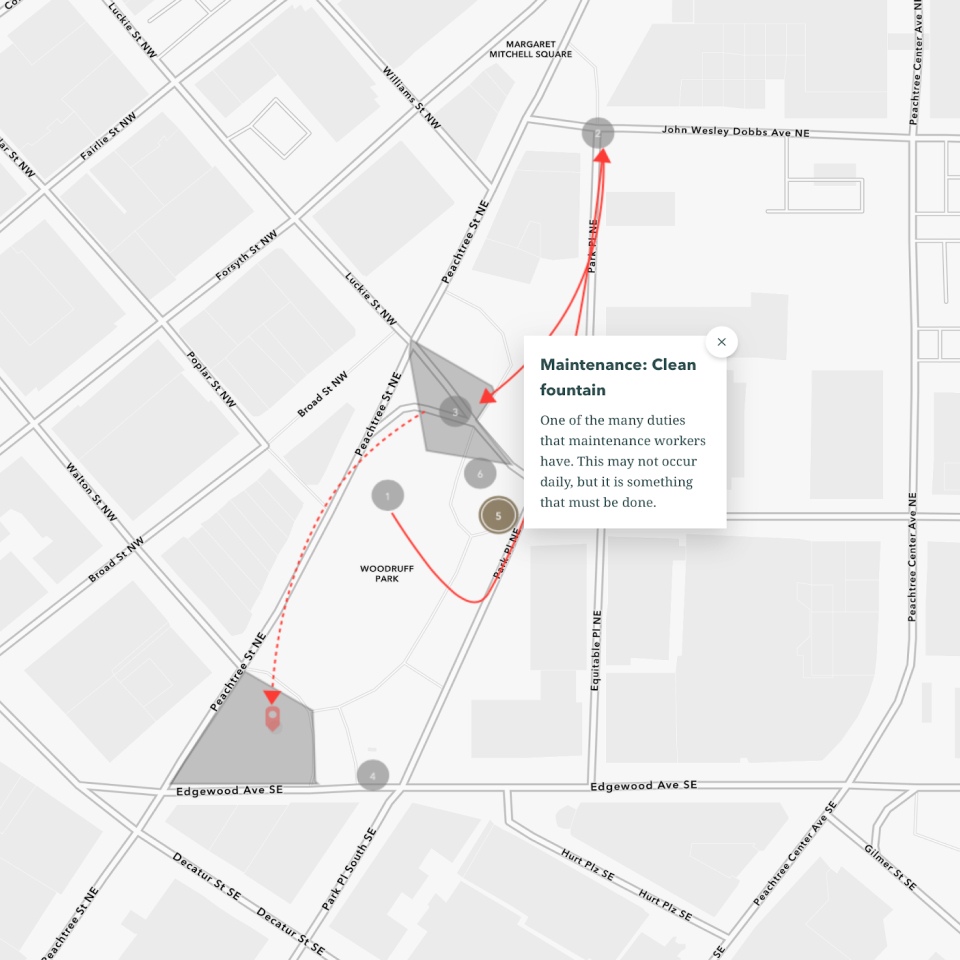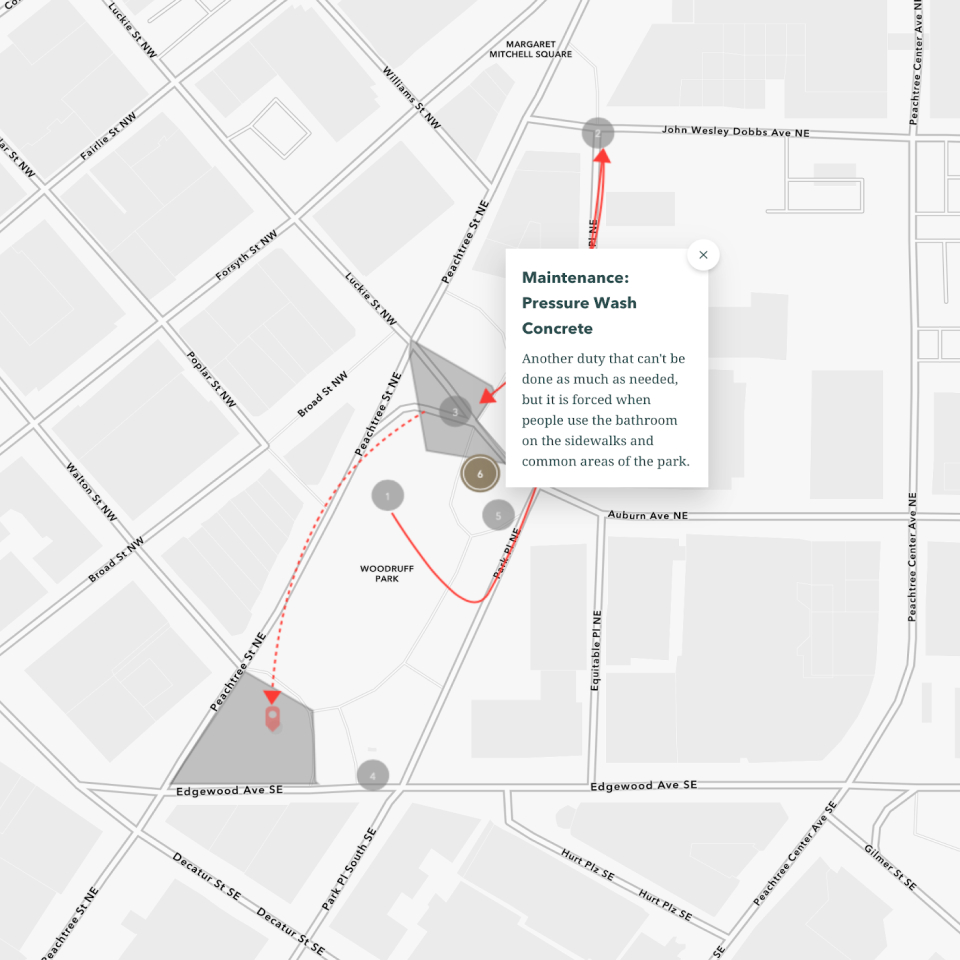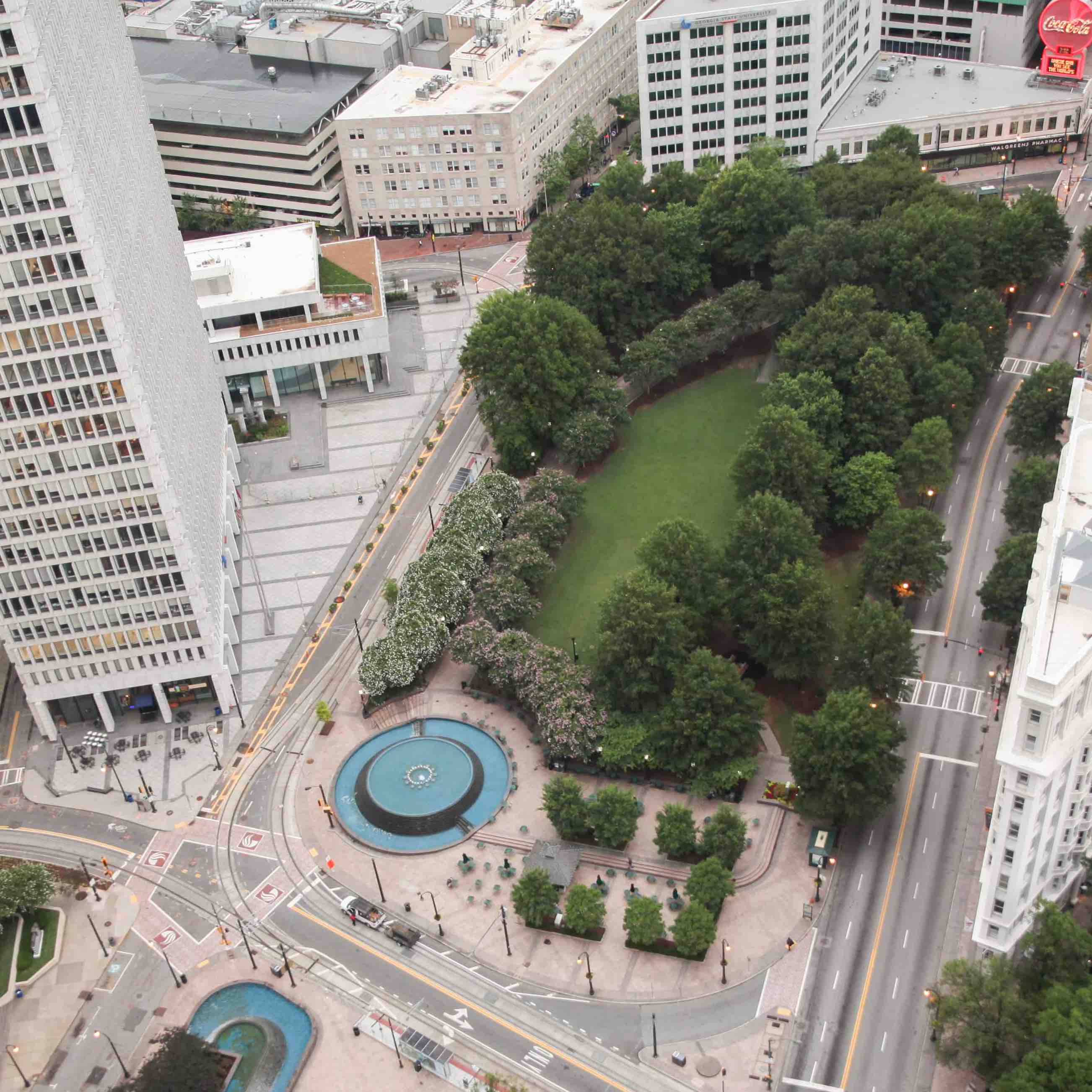
Woodruff Park Case Study
an in-depth user analysis into further understanding effective design approaches to alleviating the growing unhoused population
Problem Space
The growing unhoused population in Atlanta, Georgia, particularly in Woodruff Park, presents a complex and challenging problem space. Woodruff Park, located in the heart of the city, has become a focal point for individuals experiencing unstable housing conditions. The park serves as both a gathering place for those seeking shelter and a symbol of the broader systemic issues surrounding homelessness in the area.
This case study sought to better understand the experiences of the unhoused population in order to provide design recommendations into effective, user-centric solutions. The objective is to examine the relationships between stakeholders, interested parties, and the unhoused themselves in order to analyze how their interactions impact the problem space. This involves understanding the experiences and pain points of individuals. This analysis will highlight the different perspectives, motivations, and challenges faced by stakeholders, providing insights into potential barriers or opportunities for collaboration and problem-solving.
Target Frame
In this case study, field workers - such as maintenance and security workers - were of primary focus. There is a divide between management and field staff regarding their relationship with the park. We chose to focus on the field staff due the amount of time they spend in the area physically.
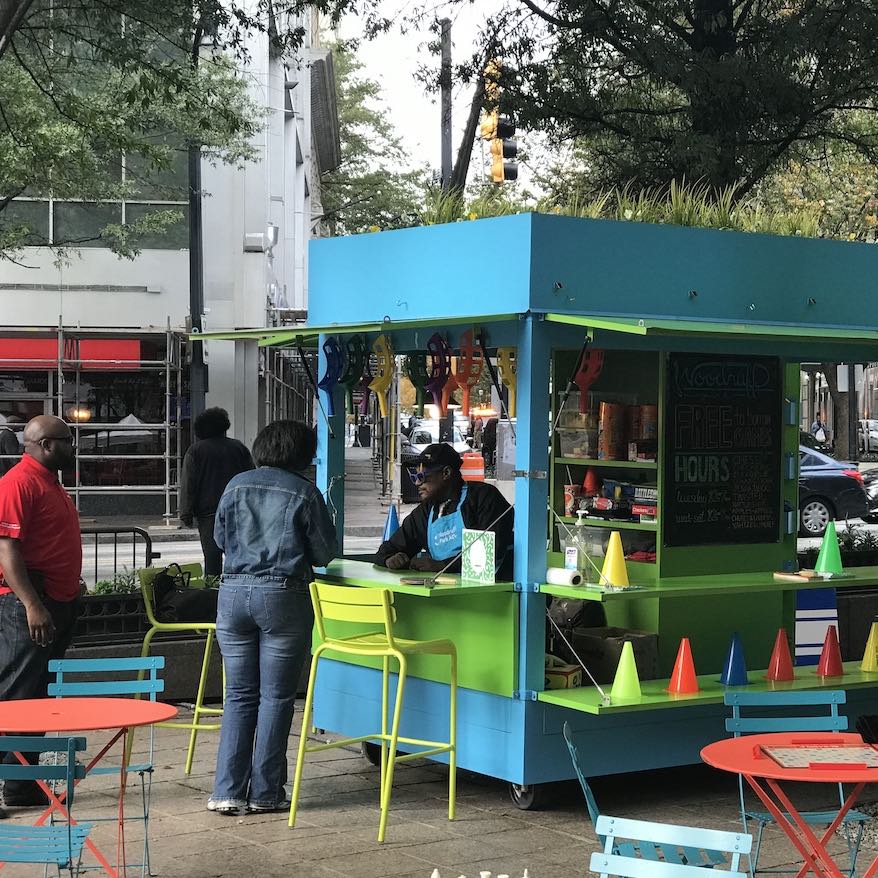
Research methodology
To gain comprehensive insights into the relationships between stakeholders, user experiences, and pain points within the problem space of homelessness in Woodruff Park, a mixed-method research methodology was employed. The research involved a combination of observations, virtual calls, and interviews.
Field Experiences
Field experiences seeks to understand the day-to-day experiences, encounters and activities within Woodruff Park - both those who are experiencing homelessness and those who frequent the area for other reasons
What is your day-to-day experience in Woodruff Park?
How do you interact with the people who use the park?
Internal Interactions
Internal interactions pertain to the relationships and collaborations among the various stakeholders involved in addressing the issue of homelessness in Woodruff Park. This seeks to explore the roles of different organizations, government agencies, and how they contribute to the larger goal of improving or maintaining the park
What is your role in the larger goal of everyone who works to better or maintain Woodruff Park?
What facilitates your communication with other Woodruff Park staff?
Personal Motivations
Personal motivations delve into the driving forces behind individuals' work and commitment to Woodruff Park. By exploring personal motivations, a deeper understanding of the passion and dedication that fuels efforts to address the homelessness issue becomes possible.
What drives your work for Woodruff Park?
Our team
Several key members of the staff were identified as contributors to the maintenance of Woodruff Park. They provided personal perspectives on the issue of homelessness in Woodruff Park.
Names have been changed for anonymity
Initiated several groundskeeping projects to add to the vibrancy of the park. Included in park decisions and considerations: provides maintenance perspectives.
Extremely passionate about the park and its visitors. Always has their best interest in mind even if they can’t see her efforts. Wants to ensure that everyone in and around the park feels comfortable, safe, and protected.
Manages Ambassador Force employees as well as assisting users and enforcing park ordinances. Identifies different maintenance issues and makes sure ordinances are enforced consistently.
Main job is to observe and report when ordinances are broken. Ambassador Force is teamed up with GSUPD and APD and they are called when needed.
Identifying user tasks
Key Insights
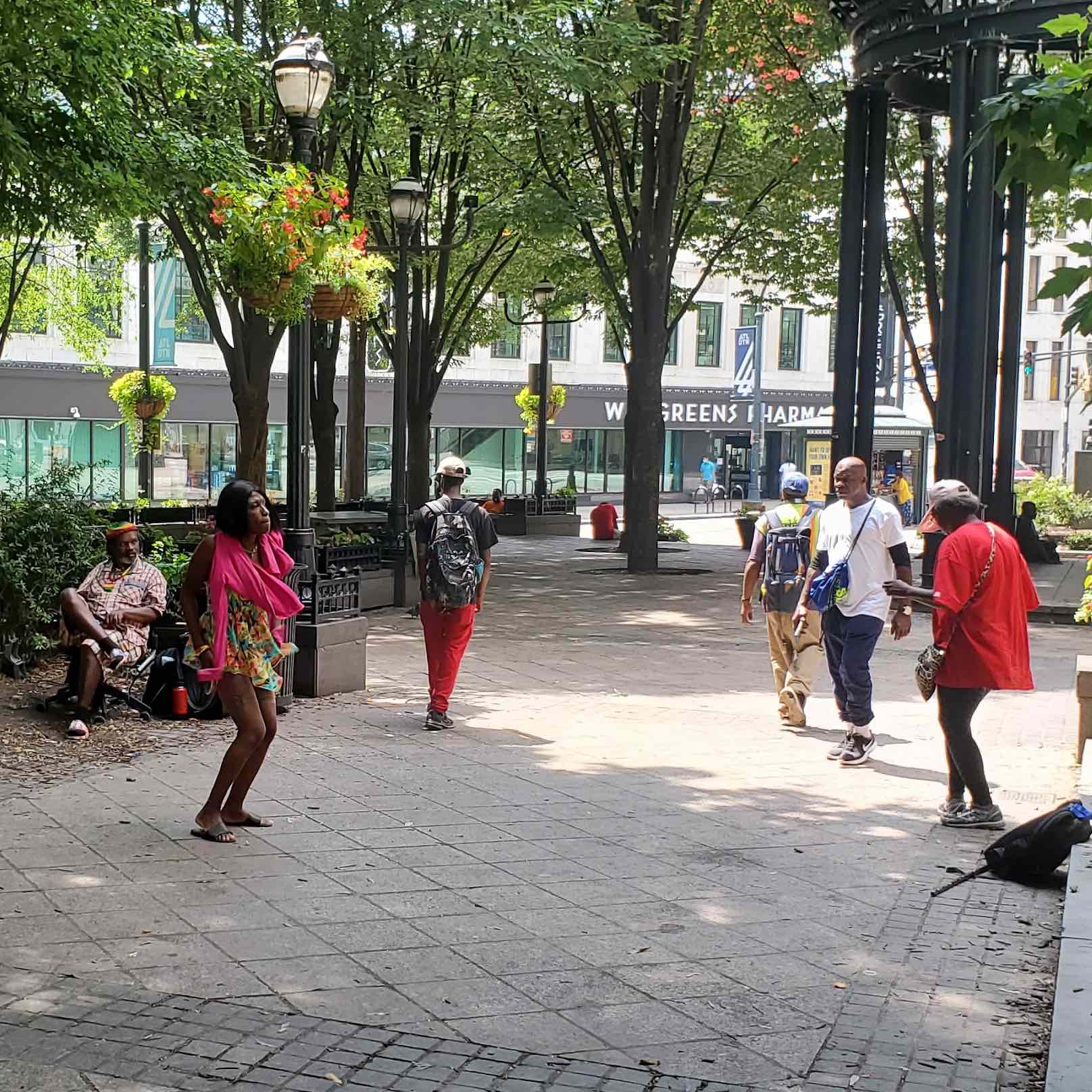



Our Design Recommendations
The design recommendations derived from the research provide deep insights and thoughtful considerations for addressing the issue of homelessness in Woodruff Park. They emphasize the exploration of the leadership chain of commands, inclusive decision-making processes that amplify diverse perspectives, effective communication that understands pain points throughout the park, and goal-oriented compromise. By understanding the hierarchical structure, valuing diverse viewpoints, empathetically grasping challenges, and working collectively towards shared objectives, stakeholders can foster collaboration and implement meaningful solutions to improve the lives of individuals experiencing homelessness in Woodruff Park.
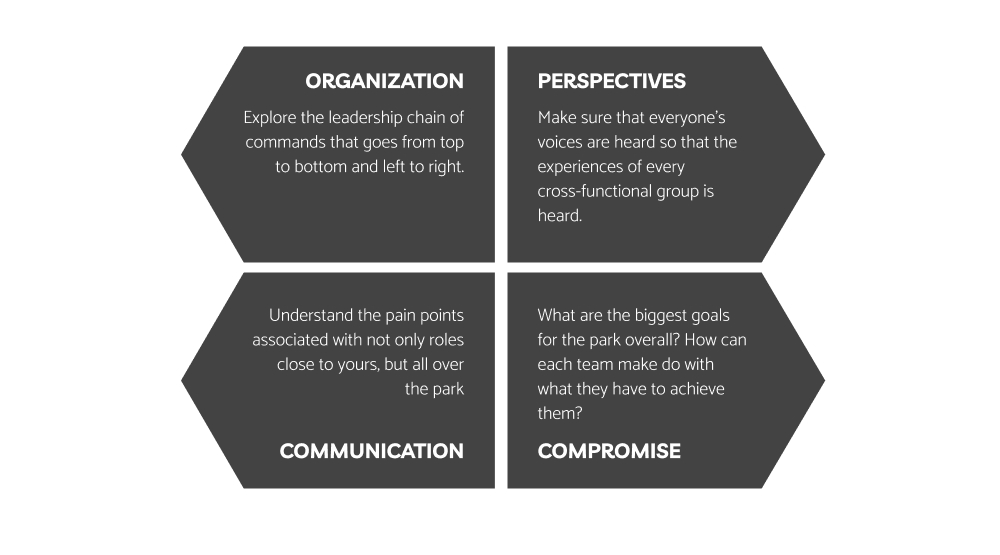
Design Brief
As of our class, we designed a physical poster to present to our peers and professors. The poster highlights the key insights discovered through our user research, alongside several design proposals to improve the user experience in the area of communication in clinical environments.
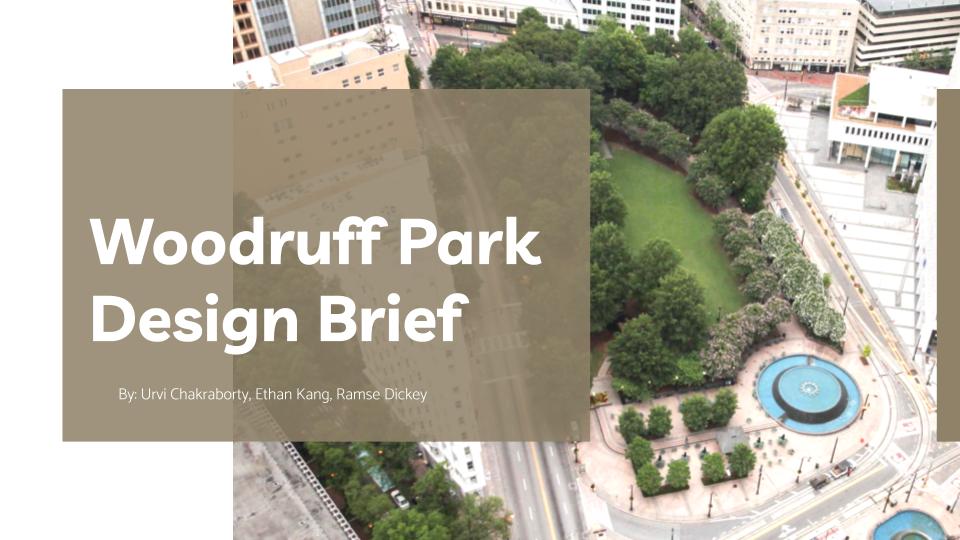
Next Steps



Learning Outcomes
Qualitative data collection and interviews
Conducting interviews, observations, and virtual calls as part of this project honed my research and data collection skills. I learned to ask thoughtful, open-ended questions that elicited rich responses and valuable insights. Additionally, I developed effective observation techniques to capture meaningful field experiences and applied active listening techniques during interviews.
Understanding of empathy and user-centricity
Engaging with individuals experiencing homelessness in Woodruff Park reinforced the significance of empathy and a user-centric approach in addressing complex social issues. Hearing their stories and understanding their experiences highlighted the importance of designing interventions and policies that prioritize their dignity, needs, and aspirations. This experience fostered my growth in empathy and reinforced the value of centering the voices and perspectives of those directly impacted.
Stakeholder dynamics and collaboration
This project provided me with valuable insights into the complexities of stakeholder dynamics and the importance of collaboration. By analyzing the relationships, motivations, and perspectives of various stakeholders involved in addressing homelessness in Woodruff Park, I developed a deeper understanding of the challenges and opportunities associated with fostering effective collaboration.
You've reached the end!
Feel free to explore my other projects!
